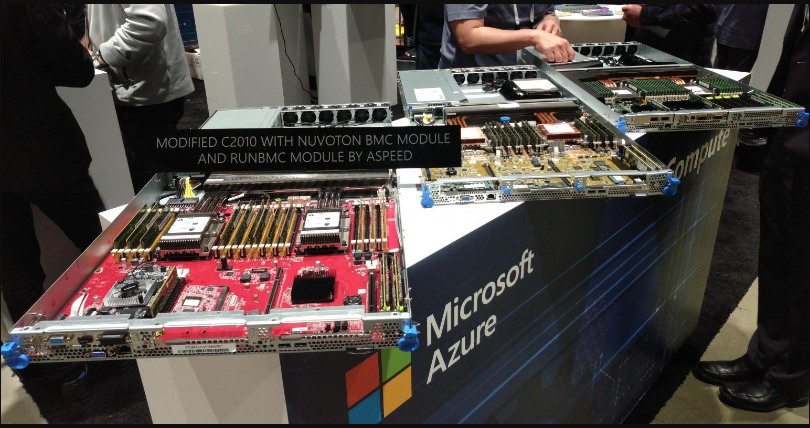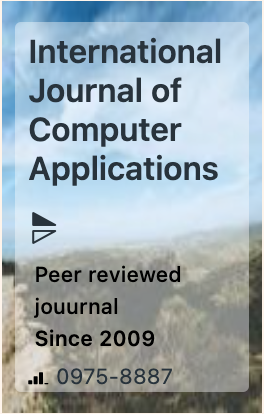The week's pick
Random Articles
Reseach Article
Generative AI: Transforming the Landscape of Creativity and Automation
| International Journal of Computer Applications |
| Foundation of Computer Science (FCS), NY, USA |
| Volume 186 - Number 63 |
| Year of Publication: 2025 |
| Authors: Gokul Pandy, Vigneshwaran Jagadeesan Pugazhenthi, Aravindhan Murugan |
 10.5120/ijca2025924392
10.5120/ijca2025924392
|
Gokul Pandy, Vigneshwaran Jagadeesan Pugazhenthi, Aravindhan Murugan . Generative AI: Transforming the Landscape of Creativity and Automation. International Journal of Computer Applications. 186, 63 ( Jan 2025), 7-13. DOI=10.5120/ijca2025924392
Abstract
Generative AI represents a transformative paradigm in artificial intelligence, enabling machines to autonomously create text, images, music, and other forms of content with remarkable fidelity. Unlike traditional AI systems designed to analyze or predict, generative AI systems focus on the synthesis of novel data that mimics human creativity. This technology is powered by advanced deep learning architectures such as Generative Adversarial Networks (GANs), transformers, and diffusion models. Applications of generative AI extend across numerous industries, including entertainment, healthcare, education, and finance, where it is redefining workflows and enhancing productivity. Furthermore, generative AI has the potential to address complex challenges in fields like drug discovery and personalized education. However, alongside its promises, it also raises significant ethical and societal concerns, such as bias, misinformation, and intellectual property disputes. This manuscript delves into the foundational principles of generative AI, its leading models, its profound applications, and the associated ethical and technical challenges. Through detailed diagrams and tables, this work aims to provide a comprehensive overview of generative AI and its transformative potential for the future.
References
- K. Brockhoff, ”Technology management as part of strategic planning – some empirical results,” R&D Management, vol. 28, no. 3, pp. 129–138, Dec. 2002, doi: 10.1111/1467- 9310.00090.
- B. S. Ingole, V. Ramineni, N. K. Pulipeta, M. J. Kathiriya, M. S. Krishnappa, and V. Jayaram, ”The dual impact of artificial intelligence in healthcare: Balancing advancements with ethical and operational challenges,” European Journal of Computer Science and Information Technology, vol. 12, no. 6, pp. 35–45, 2024. doi: https://doi.org/10.37745/ejcsit.2013/vol12n63545
- A. Ghorai, ”PEGA Robotics as a Service: Transforming Business Operations with Scalable Automation,” International Journal of Scientific Research, vol. 10, no. 5, pp. 245–251, Jan. 2021, doi: 10.21275/SR24522150657.
- G. Pandy and V. J. Pugazhenthi, ”Advances in Software Testing in 2024: Experimental Insights, Frameworks, and Future Directions,” International Journal of Advanced Research in Computer and Communication Engineering, vol. 13, no. 11, pp. 40–44, Nov. 2024, doi: 10.17148/IJARCCE.2024.131103.
- L. Xiao and V. Kumar, ”Robotics for Customer Service: A Useful Complement or an Ultimate Substitute?” Journal of Service Research, vol. 24, no. 1, pp. [page numbers], 2021, doi: 10.1177/1094670519878.
- K. K. Ganeeb, V. Jayaram, M. S. Krishnappa, S. Joseph, and J. Sundararaj, ”Smart CRP Using AI: Enhancing Customer Relationship Platform with Artificial Intelligence,” International Journal of Artificial Intelligence Research and Development (IJAIRD), vol. 2, no. 2, pp. 56–64, Jul.–Dec. 2024, doi: 10.5281/zenodo.13189241.
- S. Gavrila, C. Blanco Gonz´alez-Tejero, and J. A. G´omez Gand´ıa, ”The impact of automation and optimization on customer experience: a consumer perspective,” Humanities and Social Sciences Communications, vol. 10, Art. no. 877, 2023, doi: 10.1057/s41599-023-02389-0.
- P. Pandya, ”RPA Implementation in Banking - Strategies and Best Practices,” International Journal of Advanced Research in Science and Communication Technology, vol. 3, no. 1, Mar. 2023, doi: 10.48175/IJARSCT-8631.
- T. K. Vashishth, V. Sharma, K. K. Sharma, and R. Panwar, ”Enhancing Customer Experience through AI-Enabled Content Personalization in E-Commerce Marketing,” in Advances in Digital Marketing in the Era of Artificial Intelligence, Apr. 2024, pp. [page numbers], doi: 10.1201/9781003450443-2.
- G. Pandy, V. G. Pugazhenthi, and J. K. Chinnathambi, ”Real value of automation in the healthcare industry,” European Journal of Computer Science and Information Technology, vol. 12, no. 9, pp. 1–9, 2024, doi: 10.1038/s41467-023- 39579-y.
- K. K. Ganeeb, V. Jayaram, M. S. Krishnappa, S. Joseph, and J. Sundararaj, ”Smart CRP Using AI: Enhancing Customer Relationship Platform with Artificial Intelligence,” International Journal of Artificial Intelligence Research and Development (IJAIRD), vol. 2, no. 2, pp. 56-64, Jul.–Dec. 2024. doi: https://doi.org/10.5281/zenodo.13189241.
- ”User-interface design for highly automated systems: a structured approach,” in Proceedings of the 2013 ACM SIGCHI Conference on Human Factors in Computing Systems, May 2013, pp. 1059–1068, doi: 10.1145/2494493.2494517.
- L. Zhang, S. Howard, T. Montpool, J. Moore, K. Mahajan, and A. Miranskyy, ”Automated data validation: An industrial experience report,” Journal of Systems and Software, vol. 197, Art. no. 111573, 2023, doi: 10.1016/j.jss.2022.111573.
- Q. H. Nashid, ”The role of RPA technology in improving the quality of internal audit,” Journal of Accounting and Financial Studies, Nov. 2024. Available: https://jpgiafs.uobaghdad.edu.iq/index.php/ JAFS/article/view/1858.
- D. Huang, Q. Chen, J. Huang, S. Kong, and Z. Li, ”Customer-robot interactions: Understanding customer experience with service robots,” International Journal of Hospitality Management, vol. 99, Art. no. 103078, 2021, doi: 10.1016/j.ijhm.2021.103078.
- G. Pandy, V. Jayaram, M. S. Krishnappa, and S. Joseph, ”Advancements in Robotics Process Automation: A Novel Model with Enhanced Empirical Validation and Theoretical Insights,” European Journal of Computer Science and Information Technology, vol. 12, no. 5, pp. 64–73, Aug. 2024, doi: 10.37745/ejcsit.2013/vol12n56473.
- M. J. Kathiriya, V. Jayaram, M. S. Krishnappa, P. K. Veerapaneni, and A. R. Banarse, ”Artificial Intelligence Ancillary Event-Driven Architecture Patterns for Scalable Data Integration on Cloud Computing,” IJRAR - International Journal of Research and Analytical Reviews (IJRAR), vol. 11, no. 4, pp. 16-20, Oct. 2024. doi: http://doi.one/10.1729/Journal.41741.
- G. Pandy et al., ”Enhancing Pega Robotics Process Automation with Machine Learning: A Novel Integration for Optimized Performance,” 2024 IEEE 17th International Symposium on Embedded Multicore/Many-core Systems-on-Chip (MCSoC), Kuala Lumpur, Malaysia, 2024, pp. 210-214, doi: 10.1109/MCSoC64144.2024.00043.
Index Terms
Keywords

